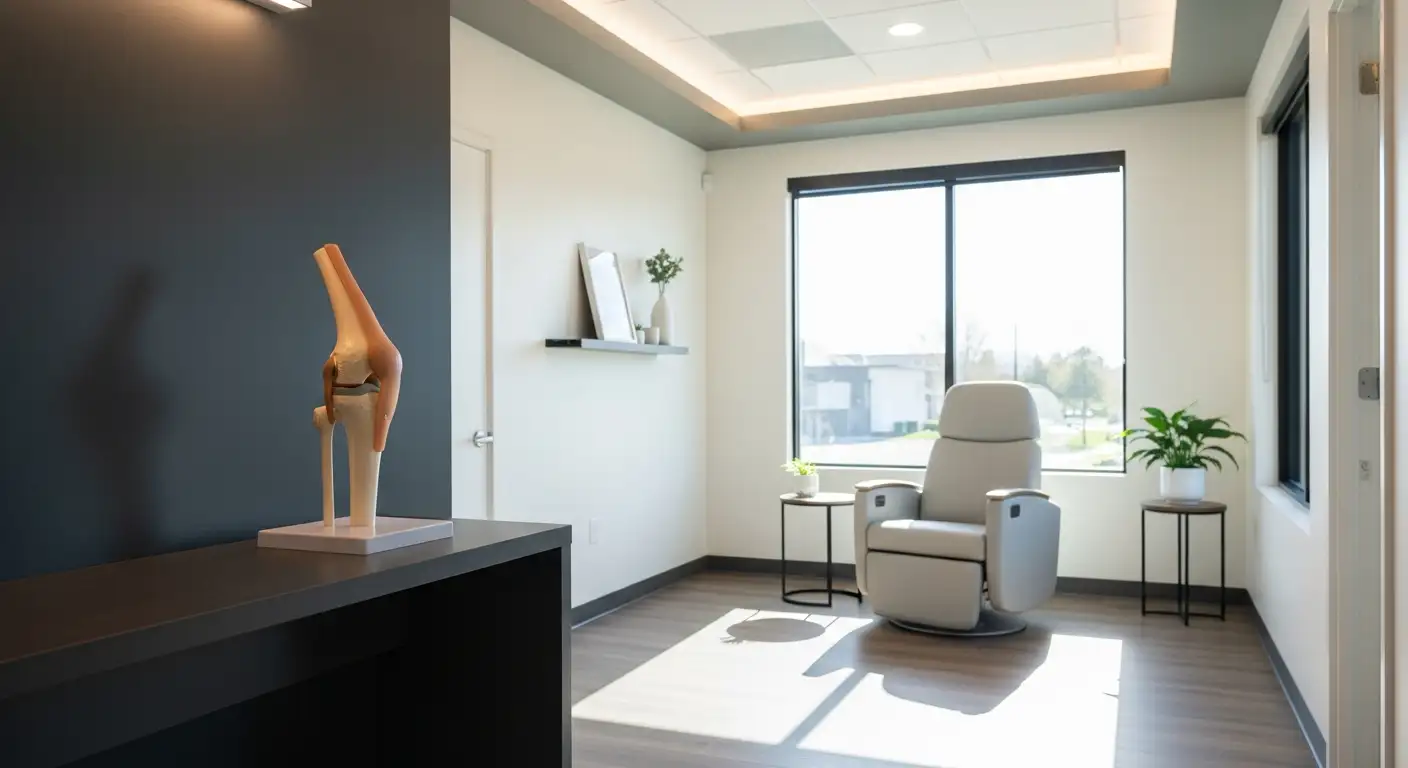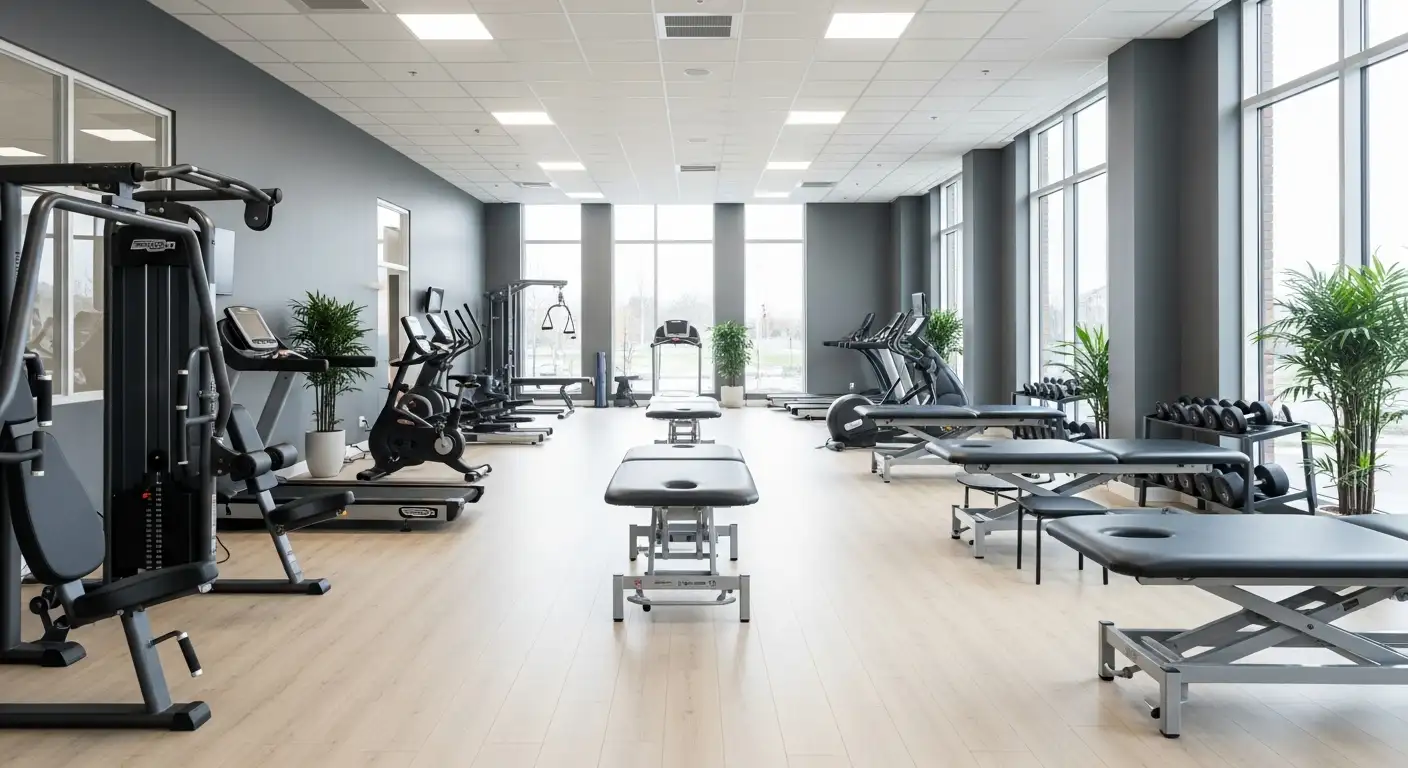Understanding Knee Pain
In order to avoid knee pain, it is crucial to first understand it. This involves recognizing the common causes that lead to knee pain and being aware of the symptoms associated with it.
Causes of Knee Pain
Knee pain is often the result of either an acute injury or a chronic condition. Acute injuries can include ligament sprains, meniscus tears, or fractures. Chronic conditions that can lead to knee pain include osteoarthritis, rheumatoid arthritis, and patellar tendinitis. Overuse of the knee joint due to high-impact sports or repetitive movements can also lead to pain and discomfort.

In addition, lifestyle factors such as maintaining an unhealthy weight can contribute to knee pain. Excess weight can put additional strain on the knee joint, leading to pain and potential damage. Even losing a small amount of weight can have a positive impact on knee health, reducing strain and the likelihood of pain.
Symptoms of Knee Pain
The symptoms of knee pain can vary depending on the cause. Common symptoms include:
- Constant ache
- Sharp, shooting pain when using the knee
- Swelling and stiffness
- Difficulty in bending or straightening the knee
- Instability or weakness in the knee
- Redness and warmth around the knee
- Popping or crunching noises
In some cases, the pain may be accompanied by other symptoms such as fever, which can indicate an infection. It is important to monitor these symptoms and seek professional help if the pain persists or is severe. Understanding and recognizing these symptoms is the first step in learning how to avoid knee pain.
In the following sections, we will explore various strategies that can help prevent knee pain, such as lifestyle modifications, exercises for knee health, the importance of proper footwear, and the role of posture and technique.
Lifestyle Modifications to Avoid Knee Pain
Key lifestyle modifications can play a crucial role in knee health, helping individuals in learning how to avoid knee pain. These changes can range from maintaining a healthy weight to ensuring regular physical activity and effective stress management.
Maintaining Healthy Weight
Maintaining a healthy weight is critical in reducing pressure on the knees. According to Healthline, every pound of body weight puts about four pounds of pressure on the knees when walking, and up to eight pounds when running. Thus, a lighter body weight translates into less strain on the knees.
Moreover, even a modest weight loss of 10% can reduce joint pain or symptoms by 50%, emphasizing the importance of maintaining a healthy weight to alleviate strain on joints [2].
Regular Physical Activity
Regular physical activity is another key aspect of knee health. It is advisable to incorporate exercises that strengthen the quadriceps and hamstrings to support the knees and reduce pain [3].
Furthermore, a lifestyle medicine approach not only helps in reducing joint pain but also aids in reducing the risk of chronic diseases like diabetes or heart disease. This highlights the significance of holistic lifestyle changes in improving overall well-being [2].
Stress Management and Quality Sleep
Chronic stress can affect joints and lead to weight gain. Finding outlets for stress, such as social connections and adequate sleep, can be effective in combating joint pain and promoting overall health.
In conclusion, adopting these lifestyle modifications can be a proactive approach to prevent knee pain. It's a holistic way of tackling the issue, focusing on overall health and well-being. These changes, coupled with the right medical advice, can help individuals keep knee troubles at bay.
Exercises for Knee Health
Regular exercise plays a crucial role in maintaining knee health and preventing pain. Exercising helps strengthen the muscles that support the knee, enhances flexibility, and improves joint function. The exercises can be categorized into strengthening exercises, stretching exercises, and low-impact exercises.
Strengthening Exercises
Strengthening exercises focus on building the muscles around the knee, including the quadriceps, hamstrings, and glutes. These muscles work in coordination to stabilize the knee joint and help prevent pain [4]. Exercises such as squats, deadlifts, monster walk (side steps), heel and toe raises, as well as wall-lean heel and toe raises can help strengthen the knees.

Stretching Exercises
Stretching exercises aim to enhance flexibility in the knees, which can alleviate discomfort and prevent knee pain. Exercises like the Half-Kneeling Hip Flexor Stretch, Dynamic Hamstring Floor Stretch, and Figure 4 Stretch can help improve knee flexibility. Stretching can address the muscular imbalances that contribute to knee pain by improving strength and flexibility.

Low-Impact Exercises
Low-impact exercises are beneficial for those with knee pain as they put less strain on the joints. These exercises allow you to stay active and improve your knee health without causing pain or damage. Examples of low-impact exercises include swimming, cycling, and walking. These activities can strengthen the leg muscles, improve flexibility, and promote knee stability.

Incorporating these exercises into your regular routine can contribute significantly to knee health. However, always remember to warm up before exercising and cool down afterwards to prevent injury. If you experience any discomfort during these exercises, it's recommended to stop and consult with a healthcare professional.
Importance of Proper Footwear
One aspect often overlooked when addressing knee pain is the role of proper footwear. Investing in the right shoes and insoles can make a significant difference in reducing strain on the knees and helping avoid knee pain.
Role of Supportive Shoes
The type of shoes one wears can have a considerable impact on the health of their knees. Shoes that offer good support and cushioning can help reduce stress on the knees during activities, thereby minimizing the risk of knee pain. These types of shoes help to absorb shock, which can be beneficial for individuals who spend a lot of time on their feet or partake in high impact activities [3].
Moreover, well-fitted shoes provide stability, which can help prevent missteps or uneven distribution of weight that could potentially lead to knee injury [4].
When selecting shoes, one should consider factors such as fit, support, and cushioning. It's crucial to try on shoes in the store and walk around in them to ensure they feel comfortable and supportive. If possible, getting professionally fitted for shoes can ensure optimal support and fit.
Utilizing Orthotic Insoles
In addition to supportive shoes, orthotic insoles can also play a crucial role in preventing knee pain. These insoles are designed to provide extra cushioning and support, reducing the impact on the knees during activities.
Orthotic insoles such as Footlogics Comfort and Footlogics Casual can provide significant relief from knee pain. They are designed to correct biomechanical imbalances, provide arch support, and cushion the feet, all of which can alleviate stress on the knees.

Remember, while proper footwear and insoles can significantly help in preventing knee pain, they should be used in conjunction with other preventive measures such as regular physical activity, maintaining a healthy weight, and practicing good posture and proper technique during activities.
Posture and Technique in Preventing Knee Pain
Adopting correct postures and techniques can significantly contribute to minimizing knee pain. Ensuring proper alignment of the body during daily activities and exercises can reduce unnecessary strain on the knee joint and protect the knees from injury.
Correct Posture for Daily Activities
Maintaining good posture during daily activities is an effective strategy to prevent knee pain. This includes simple tasks such as sitting, standing, and lifting objects. For instance, when lifting heavy objects, it's important to bend at the knees instead of the waist to avoid undue stress on the knee joint [1].
Moreover, incorporating regular breaks in periods of prolonged sitting or standing can also help alleviate potential pressure on the knees. Simple habits like setting alarms to move around after an hour of sitting can contribute towards knee health and prevent discomfort [6].
Proper Technique During Exercise
The technique employed during physical exercises plays a significant role in preventing knee pain. An improper form can lead to excessive strain on the knees and other joints, leading to pain and potential injuries.
Proper warm-up and cool-down routines can help prevent knee pain during exercise by preparing the muscles for activity and aiding in recovery afterwards. These routines help to increase blood flow to the muscles, improve flexibility, and reduce the risk of injury [4].
Furthermore, it's essential to strengthen the muscles around the knee and improve flexibility to maintain proper knee health. Strengthening exercises such as squats, deadlifts, and heel and toe raises can improve knee stability, while stretching exercises like the half-kneeling hip flexor stretch and figure 4 stretch can enhance knee flexibility.
Strengthening other areas of the body, such as the core and gluteal muscles, can also contribute to knee health. Stronger muscles can help provide better support for the knee joint, reducing the risk of injury and pain.
In conclusion, adopting proper posture during daily activities and ensuring correct technique during exercises can significantly reduce the risk of knee pain. Regular strength training, stretching, and maintaining a healthy lifestyle are also essential for overall knee health.
When to Seek Professional Help
While there are numerous ways to prevent or manage knee pain, there are times when professional help is necessary. Recognizing when to seek medical advice is crucial in maintaining knee health and preventing further complications.
Persistent or Severe Knee Pain
Persistent or severe knee pain is not something to ignore. If the pain lasts for more than a month, interferes with daily activities, or if it's a result of an injury, it is recommended to seek professional help [5]. As per Penn Medicine, if knee pain persists or worsens despite self-care measures, medical advice and treatment should be sought to address any underlying issues causing the pain and prevent further damage.
Unstable or Locked Knee
An unstable knee is a clear signal that professional help is required. If the knee feels unstable, gives out, or locks up, these symptoms should be checked by a professional. Such symptoms can indicate serious knee conditions such as ligament injuries or meniscus tears, which may require medical intervention.
Abnormal Knee Sounds
Abnormal knee sounds, such as clicking or popping, should not be taken lightly. These sounds could indicate a range of issues, from minor conditions like a runner's knee to more serious problems like a torn cartilage. If these symptoms are accompanied by sudden, sharp knee pain or difficulty bearing weight, it is advisable to seek medical attention.
In conclusion, while preventive measures and lifestyle modifications play a significant role in maintaining knee health, it's important to listen to your body and seek professional help when necessary. By doing so, you can ensure that your knees remain healthy, strong, and pain-free. Remember, early detection and treatment of knee problems can help prevent long-term damage and disability.
References
[1]: https://www.mayoclinic.org/diseases-conditions/knee-pain/symptoms-causes/syc-20350849
[4]: https://www.healthline.com/health/exercises-for-knee-pain
[5]: https://www.hss.edu/article_exercises-strengthen-knees.asp
[6]: https://www.hss.edu/article_stretches-exercises-knee-pain.asp





